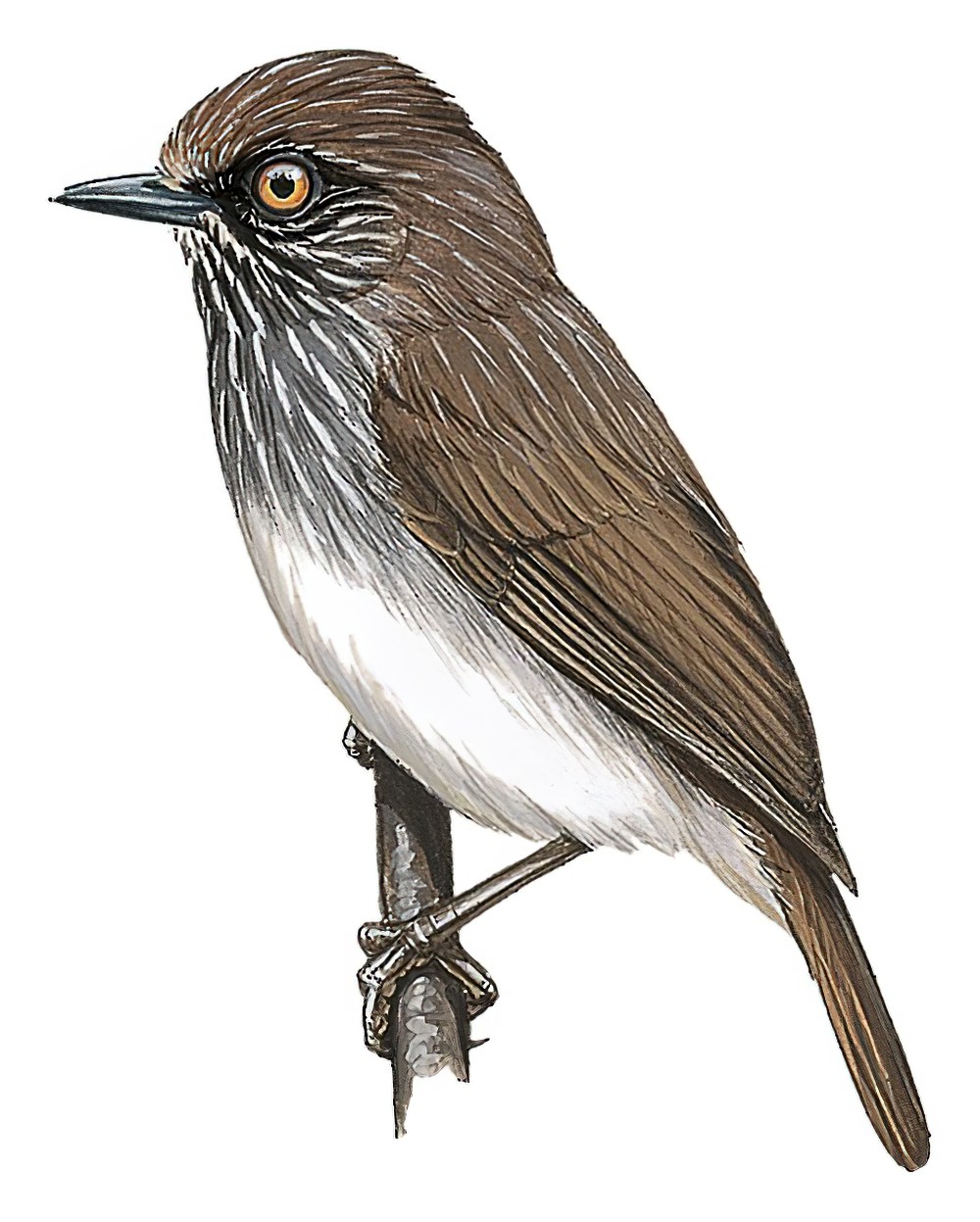Visayan Pygmy-Babbler / Dasycrotapha pygmaea

Visayan Pygmy-Babbler
SCI Name:
Protonym: Zosterornis pygmaeus Bull.Br.Orn.Club 6 p. 18
Taxonomy: Passeriformes / Zosteropidae / Dasycrotapha
Taxonomy Code: vispyb1
Type Locality: Samar, Philippine Islands.
Author: Ogilvie-Grant
Publish Year: 1896
IUCN Status: Near Threatened
DEFINITIONS
DASYCROTAPHA
(Zosteropidae; Ϯ Flame-templed Babbler D. speciosa) Gr. δασυς dasus hairy; κροταφος krotaphos brow, temples; "This last bird is so anomalous in its structure that I propose to constitute it the type of a new genus, DASYCROTAPHA3. Base of maxilla densely clothed with short feathers, space behind the eye naked. Bill about the length of head, and formed as in Mixornis. Wing lengthened, longer than tail, first primary half the length of the second, which is a fifth shorter than the third, third a little shorter than the fourth, which is equal to fifth and sixth. Tail moderate and square. Tarsus strong; hallux with claw stout and long; digits short, slender; outer a little shorter than the inner. DASYCROTAPHA SPECIOSA, sp. nov. (Plate IX.). Head crested; forehead with dense short plumes covering the base of the maxilla; circle around the eye, whole space before the eye, tuft on the side of the base of mandible, chin and uppermost part of throat pure lemon-yellow; crown of the head black; postoccipital plumes yellow; nape yellowish green tipped with black; a lengthened tuft of plumes springing from above the eye bright orange; a line immediately below this tuft black; a tuft of stiff decomposed feathers springing from below the eye and extending over the ears white or greyish white ... The hereditary affinity of this new form with Macronus striaticeps and Mixornis capitalis is betrayed by the colouring and markings of the dorsal plumage. ... 3 δασυς, villosus, et κροταφοι, tempora capitis" (Tweeddale 1878); "Dasycrotapha Tweeddale, 1878, Proc. Zool. Soc. London, p. 114, pl. 9. Type, by original designation and monotypy, Dasycrotapha speciosa Tweeddale." (Deignan in Peters, 1964, X, p. 302). This bird has also been given the substantive name Flame-temple, and I have suggested elsewhere that the birds of this genus be given the substantive Zosterornis, to reflect their new position in the Zosteropidae.
Var. Dasycrotopha.
pygmaea / pygmaeum / pygmaeus / pygmea / pygmeum / pygmeus
L. pygmaeus pygmy < Gr. πυγμαιος pugmaios pygmy, of the size of a fist < πυγμη pugmē fist.
● ex “Flat-billed Auk” of Latham 1785, and “Pigmy Auk” of Pennant 1785 (Aethia).
● ex “Pygmy Parrakeet” of Latham 1781 (syn. Charmosyna palmarum).
● “73. PLATALEA. ... pygmea. 3. P. corpore supra fusco, subtus albo. Mus. Ad. Fr. 2. p. . . Habitat Surinami. Magnitudo Passeris.” (Linnaeus 1758) (Calidris).
● ex "Pygmy Curlew" of Pennant 1773, and Latham 1785 (syn. Calidris ferruginea).
● ex “Petit Gobe-mouche tacheté de Cayenne” of d’Aubenton 1765-1781, pl. 831, fig. 2, “Gobe-moucheron” of de Buffon 1770-1783, and “Dwarf Fly-catcher” of Latham 1783 (syn. Myrmotherula brachyura).
UPPERCASE: current genus
Uppercase first letter: generic synonym
● and ● See: generic homonyms
lowercase: species and subspecies
●: early names, variants, mispellings
‡: extinct
†: type species
Gr.: ancient Greek
L.: Latin
<: derived from
syn: synonym of
/: separates historical and modern geographic names
ex: based on
TL: type locality
OD: original diagnosis (genus) or original description (species)












